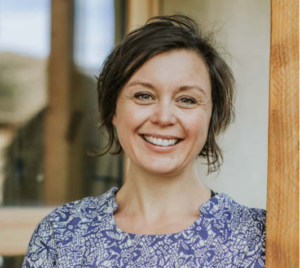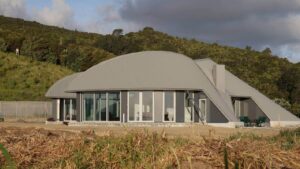Mary James is the director of publications at Passive House Accelerator in the US. She’s written multiple books on aspects of Passive House and her work New York Passive House 2015 was my inspiration to write and publish Passive House for New Zealand: The warm healthy homes we need. I was quietly pleased to see myself and Arthur Lee of …
Passive House in the spotlight

Josefine Watterson’s Featherston home has just received certification but already it is doubtless the nation’s best known Passive House home, thanks to being featured on Grand Designs. Josefine is the owner, architect, Passive House designer, project manager and joiner, a noteworthy number of hats to wear. She deserves congratulations on a very high-performing build that came in on time and …
Jessica Eyers moving to Sustainable Engineering Ltd

Jessica Eyers is joining Sustainable Engineering Ltd in 2023. Jessica needs little introduction to New Zealand’s Passive House community as she has been a certified Passive House designer for nearly a decade. Jessica’s arrival will further increase the company’s capacity to carry out Passive House design and take on large and more complicated projects. Jessica will bring valuable insight as …
Grand design at Tapu more than meets the eye

Stuff’s ranking of this season’s homes featured on Grand Designs is of course highly subjective and arguably not particularly useful. Sustainability did feature as a criteria but frankly was a bit token. Rainwater tanks are hardly an optional sustainable upgrade when town water supply isn’t available. Predictably, our team puts the Watterson Residence in Featherston in the #1 spot. We …
Renewal of your PH Designer/Consultant or PH Tradesperson Qualification

We’re often asked by accredited PH Designers / Consultants and Tradespersons how to renew their qualification. For PH Designers / Consultants there are two ways to renew your qualification: By documenting a Certified Passive House, EnerPHit retrofit (or Precertification) or PHI Low Energy Building for which you have done the PH design work in a special technical report format and …
“Grand” Passive House project in spotlight

Great to see certified Passive House performance getting some prime media coverage. It featured on Grand Designs this month, which was then written up by Stuff. It’s a large home in Featherston, designed by one of the owners, and looks fantastic. The owners got stuck in on the construction side too; it was a great effort but had to be …
Q&A on Passive House on Today FM podcast

Sustainable Engineering principal Jason Quinn featured in a long segment on the Design & Build Show. The interviewers did a good job of raising lots of the misconceptions that linger about the Passive House methodology. Hopefully Jason dispelled them. It was great that Ngā Kāinga Anamata got discussed at some length. The image above will take you to the second …
It’s not just about the money

Here’s a nice round up from Stuff, who talked to people living in Dunedin’s Toiora High Street co-housing development, which is certified Passive House. Stuff has covered this project well and it’s great that journalist Colleen Hawkes went back to ask how residents were liking their new homes after a year of living there. The answer? Very much indeed. The …
New video focuses on Fletcher’s LowCO project

It’s not often our work features in video format so it was fun to see Newsroom cover the LowCO (low-carbon) homes by Fletcher Living. Sustainable Engineering has been involved with this project for the past two years, working on the embodied carbon modelling and consulting on the finer points of energy modelling. Some novel questions have emerged! For instance, we’ve …
